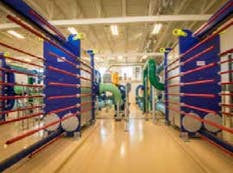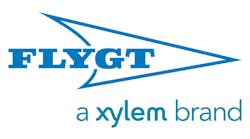A $12-million public and private research project—the Nebraska Innovation Campus (NIC) in Lincoln, Neb.—is a combined effort of the University of Nebraska Lincoln (UNL) and the private sector and aspires to be the most sustainable research and technology campus in the United States. The NIC campus will eventually feature 2.2 million sq ft of building space that will need to be heated and cooled.
Scope
A unique system known as the Centralized Renewable Energy System (CRES) was designed by Olsson Associates to provide significant amounts of energy to NIC in an innovative, efficient and renewable manner and eventually handle the heating and cooling needs of 1.8 million sq ft. (The remainder of NIC will be heated and cooled using traditional methods.) CRES uses the heat from the City of Lincoln’s Theresa Street Wastewater Treatment Facility (WWTF), which is conveniently located next to NIC.
In the CRES, wastewater effluent is delivered to the heat exchange facility where plate and frame heat exchangers heat and cool the water within the NIC piping loop. Pumps at the heat exchange facility move water through the NIC loop to the buildings for use in their heating and cooling systems.
Energy usage is monitored at each tenant building using a quality btu meter that is calibrated and maintained on a regular basis.
Solution
The heat exchange facility pumps—purchased from Electric Pump, a Xylem distributor—are Flygt CP 3306 110-hp submersibles with a design point of 4,947 gpm at 62.4-ft total dynamic head. There are currently three pumps installed; the project was designed for expandability, so three more pumps can be added when necessary. The pumps utilize variable frequency drives, and the lift station operates 24 hours a day. In the initial construction phase, only one pump operates, and its speed varies based on demand. As buildings are added, two pumps will operate with a third acting as a spare. When demand exceeds the capacity of the two pumps running in parallel, more pumps will be added so that at full build-out, five pumps will operate at up to 28 mgd with a sixth pump acting as a spare. Water is pumped through 2,000 ft of 30-in.-diameter pipe to the heat exchange facility and then returned back to the WWTF’s discharge location, Salt Creek, through an additional 2,000 ft of 30-in. pipe.
Flygt submersible pumps operate directly in the liquid being pumped, which means that they require neither special housing nor a superstructure to support them, considerably reducing construction costs. They are smaller than non-submersible counterparts, as the motor and hydraulics are integrated into one compact unit, resulting in smaller pumping stations that are less complex to build.
Effluent water and CRES water do not mix—only thermal property is transferred between the two systems. The WWTF effluent temperature ranges from 57 to 75°F. The maximum temperature returned to the WWTF is 85°F. The system is more efficient than geothermal, especially in the winter, as the effluent temperature only goes down to 57°F, while a geothermal system may drop to 40°F. This adds to the CRES’ efficiency and energy savings.
Result
After the first phase of construction, the CRES is heating and cooling one 65,000-sq ft office building, which also includes a conference center. Future locations that will use the CRES include greenhouses, lab and research facilities, additional office buildings, a hotel, residential housing and retail.
The CRES system will result in about 25% energy savings over traditional systems (chillers and boilers) when cooling and 30% energy savings when heating.



